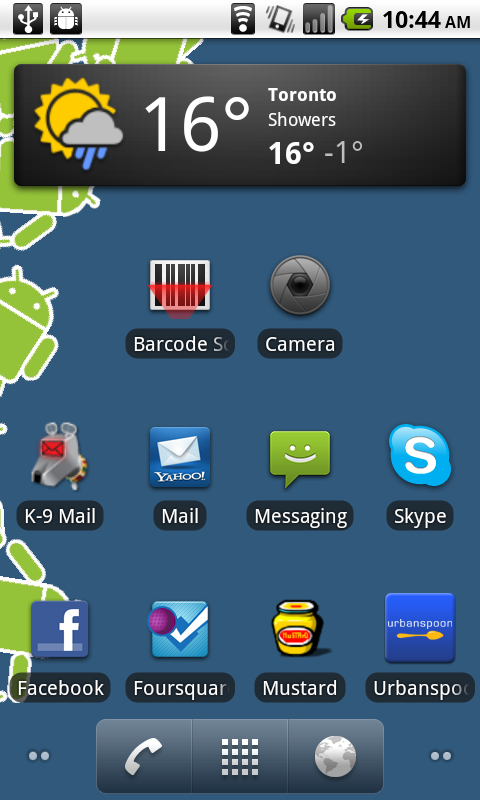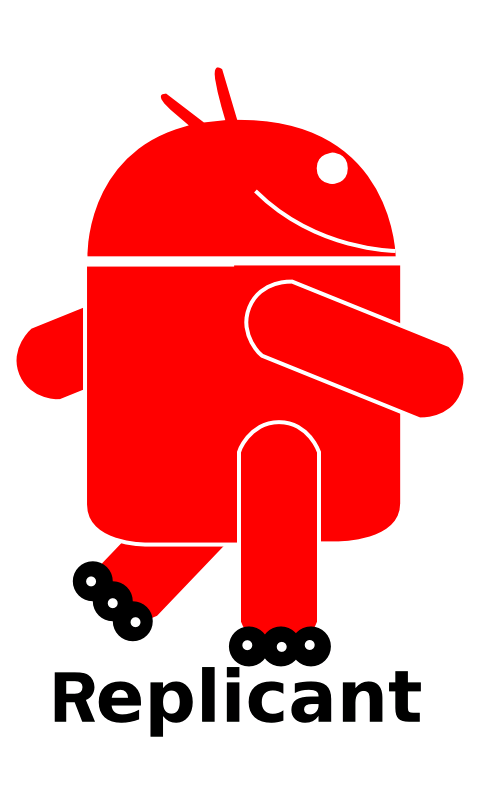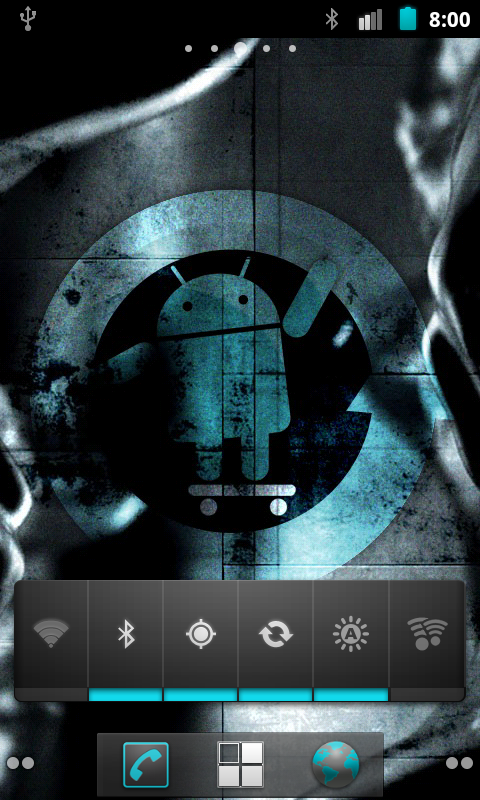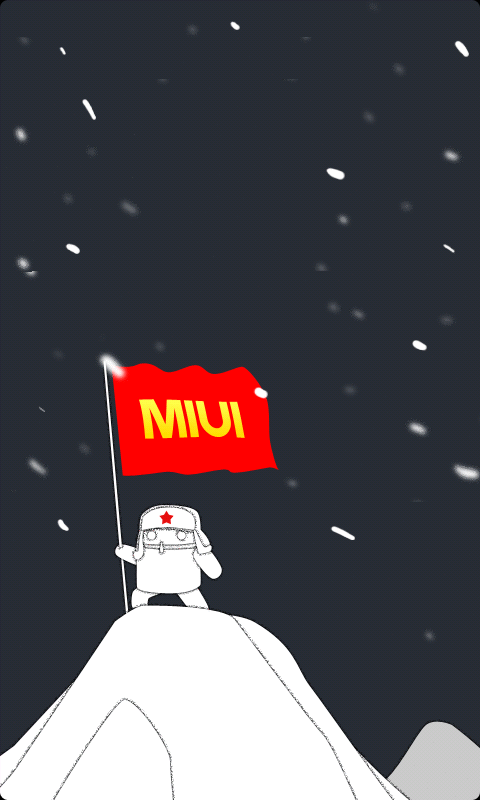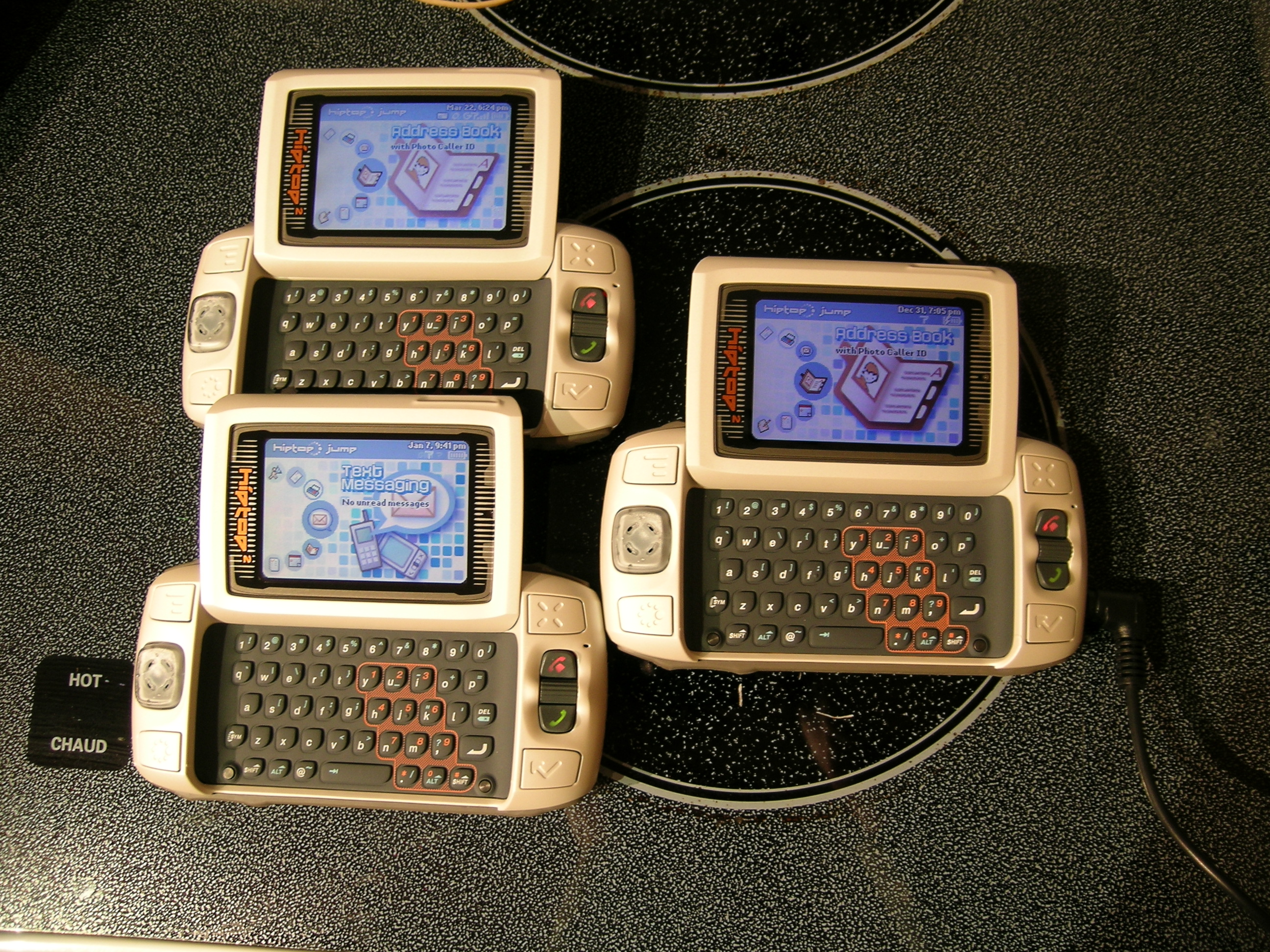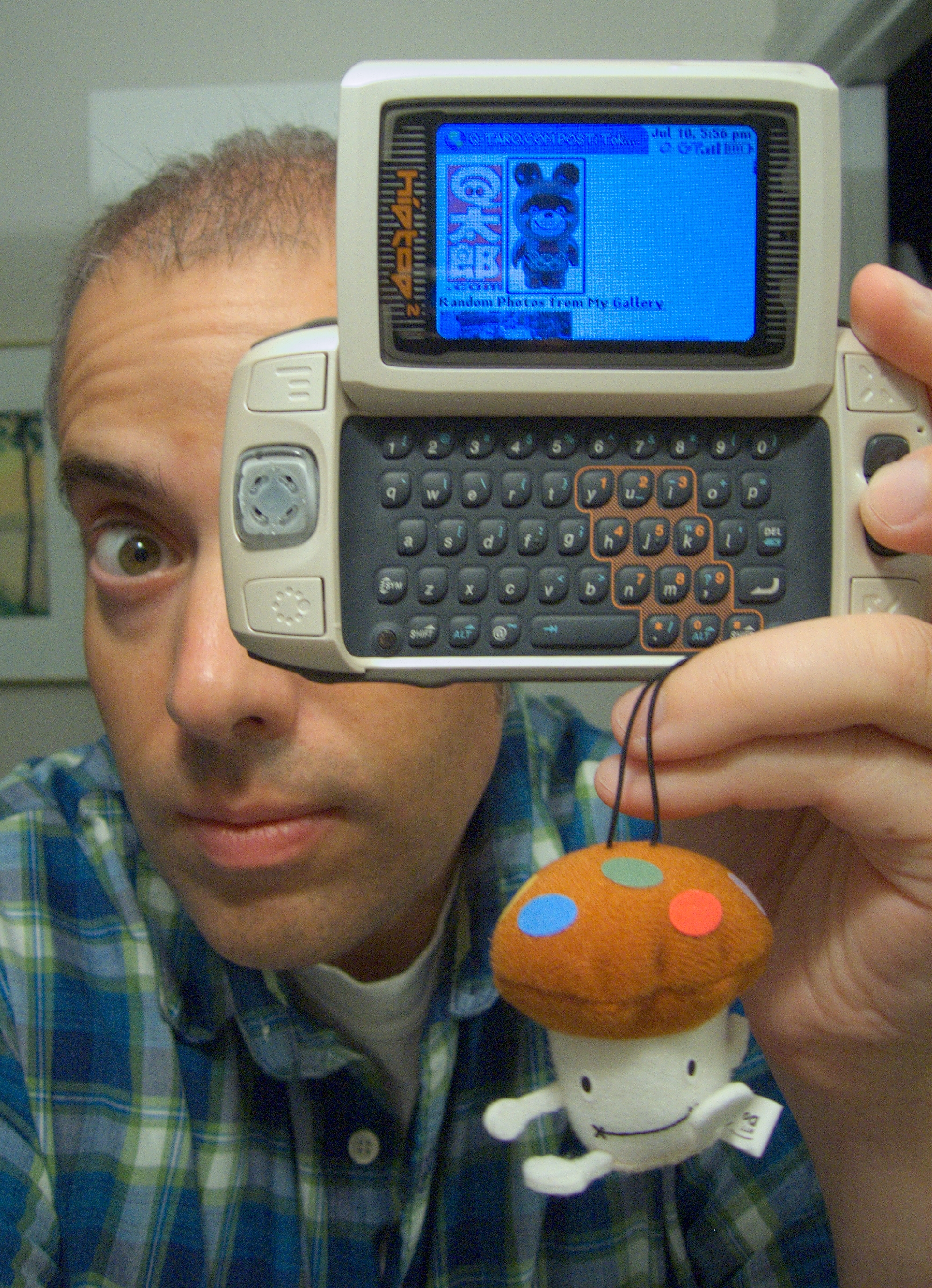You’ll recall that the word “Nexus” means three things when it comes to phones:
- “Pure Android” — an operating system free of carrier bloat;
- Factory unlocked — usable on any network (frequencies notwithstanding);
- Unlockable bootloader — and the widest available selection of custom kernels, ROMs, etc.
It’s this recipe for success that has kept me faithful to the Nexus line for three devices and counting — four if you include the Nexus 7 tablet charging in the other room as I write this. To be honest I’m not so much a fan of plasticky Samsung phones; that I’ve bought two of them says something about my unfaltering loyalty to Nexus.
The first time I saw the Nexus S was in the hands of a Mr. Dave Dobbin. At that time he was the CEO of Mobilicity, and in January of 2011 he had the T-Mobile version with him at a promotional event I attended. Yours truly go to hold it for a precious few seconds. Though otherwise an unremarkable slab, the screen on this Samsung was a wonder to behold. The colours were incredibly vivid and rich; the blacks so deep as to be an abyss. And the glass was impossibly curved, fitting perfectly against your cheek when on the phone.
I came very close to purchasing one at a Best Buy during South by Southwest later that spring, and when Mobilicity started selling it in April I could no longer resist.
The first beneficiary of this purchase was actually my Nexus One. Relieved of its day-to-day duties I was able to figure out this whole rooting and ROM-ing business with drastically reduced consequences. It wouldn’t be until December, 2011 that I’d load the legendary CyanogenMod ROM onto my Nexus S; when I did I was pleasantly surprised by the inclusion of a fully-functioning Google Wallet app. I used it with the S’s on-board NFC chip to make my first contactless mobile phone payment, a fancy tea at a posh supermarket café. I’d like to believe it was the first such event in Canada; it probably wasn’t but that’s my story and I’m sticking to it.
At the end of that month my girlfriend and I visited Hong Kong (my 6th trip there!) to ring in 2013. While Samsung’s wide-bodied Galaxy Note was all the rage there, I was on the hunt for the “it” phone of the moment back in the Americas, the Galaxy Nexus. I felt confident buying it overseas because this third Nexus had a pentaband radio, meaning that I could enjoy 3G data speeds on any carrier anywhere in the world. It was also free of any carrier locks. Unfortunately it cost more in Hong Kong than on the Bell network back in Canada.
The Galaxy Nexus eventually got a wider release here, and I got mine on a subsidy from WIND Mobile in the spring. WIND is another upstart Canadian carrier, offering unlimited calls, texts and data at prices much lower than the incumbents. I had switched to them from Mobilicity before Christmas, when they ran a holiday promotion. WIND has proven to be much better in terms of coverage for me — for the first time since I was with Fido I could actually make phone calls from inside my home… What an age we live in!
This third Nexus was both new and familiar at the same time. There was the curved glass, plus a new version of Android — another hallmark of the Nexus line. I wasn’t really sold on the HD screen and dual-core processor at first; both seemed unnecessary, frivolous even. But over the ensuing months I came to appreciate my Galaxy Nexus as a mobile gaming powerhouse — maybe not the most noble use of bleeding edge technology, but a lot of fun nonetheless.
My trio of Nexus phones accompanied my girlfriend and I to Barcelona in the spring of 2012 — the Nexus One in her back pocket, the Nexus S in mine and the Galaxy Nexus tucked away in the hotel safe. We received lots of advance warnings about pickpockets and such but I needn’t have worried — the Nexus S was (and is) a perfectly usable phone, anyway. I finally convinced my girlfriend to accept it as her next hand-me-down this past September. I took back my Nexus One, which I’m currently using to explore free/libre software from the F-Droid repository. The Galaxy Nexus is to this day my side arm of choice, and will likely remain so until the next Nexus is announced.
]]>
A family portrait of Nexus devices, or at least their boxes.
I’ve pretty much resigned myself to be a Nexus user — not only are they sold unlocked, but they’re easy to root and have the widest available selection of custom ROMs.
The Nexus S (purchased in April, 2011) was my first device with NFC on board. I used it in December of that year to make the first documented mobile payment in Canada — unless someone can prove otherwise?
Later that month I took it with me to Hong Kong, and the next spring on to Barcelona. It took until the summer of 2012 to wean my girlfriend off of my her Nexus One, and accept the Nexus S as her next hand-me-down.
My next phone (current as of this writing) was another Nexus product from Samsung, the Galaxy Nexus. I got it this past spring from my new carrier WIND Mobile. It’s cursed with MTP but blessed with a dual-core processor and a 720 by 1280 pixel “HD” display — perfect for my gaming addiction of the moment.
The Galaxy Nexus was also the first pentaband Android device — that is, the same model worked on all 3G and AWS frequencies. Note that the US carrier Verizon got a separate CDMA-based variant. Sucks to be them.
]]>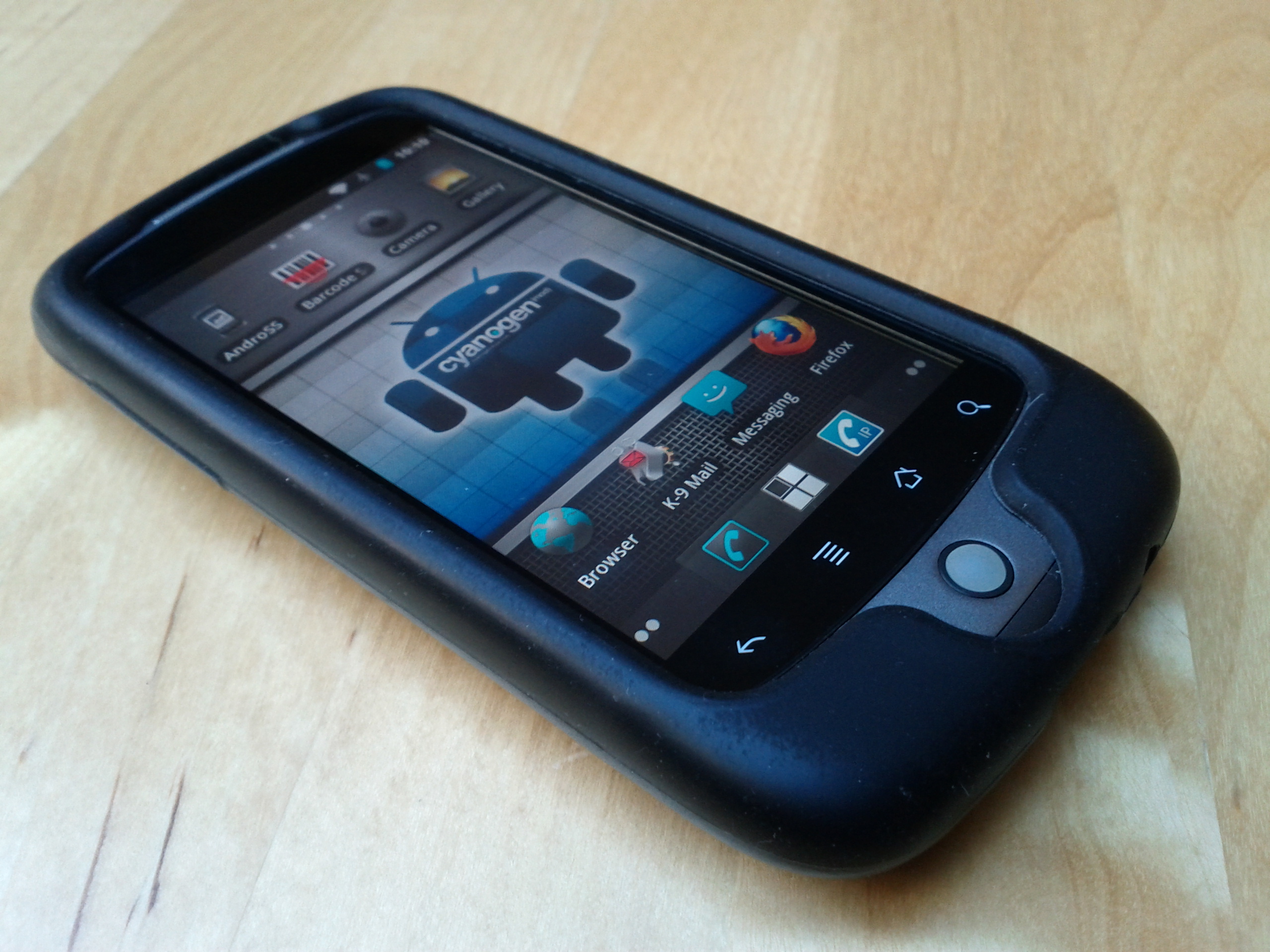
As a first Android device you could certainly do a lot worse than HTC’s G5 Google’s Nexus One. Mine is still in use as my girlfriend’s daily driver.
It all started out as a test, of not only Android but a new Canadian carrier as well. That fellow N97 24/7 alum Jonathan Bruha had already jumped ship to this same device put me at ease somewhat.
Though Android was orders of magnitude easier than Symbian to set up and use there were definitely a few things lacking in terms of utility. For example, in order to grab this screen from my N1 I had to download and install the Android SDK.
Considerably more effort was required to set up my computer to root the damn thing and flash a custom recovery image. Nexus phones are made for this, of course, but it was still a daunting task for a n00b like me. It took me an entire day to get my Nexus recognized by my computer via fastboot.
But man, was it ever worth it. Just like distro-hopping on my Linux computers I could now change ROMs on my phone at will. Mind blown.
In no short order I installed Replicant (needs work), CyanogenMod (amazing) and MIUI, which my girlfriend swears by to this very day. In fact, I had to pry the N1 from her hands just to grab that third screen!
]]>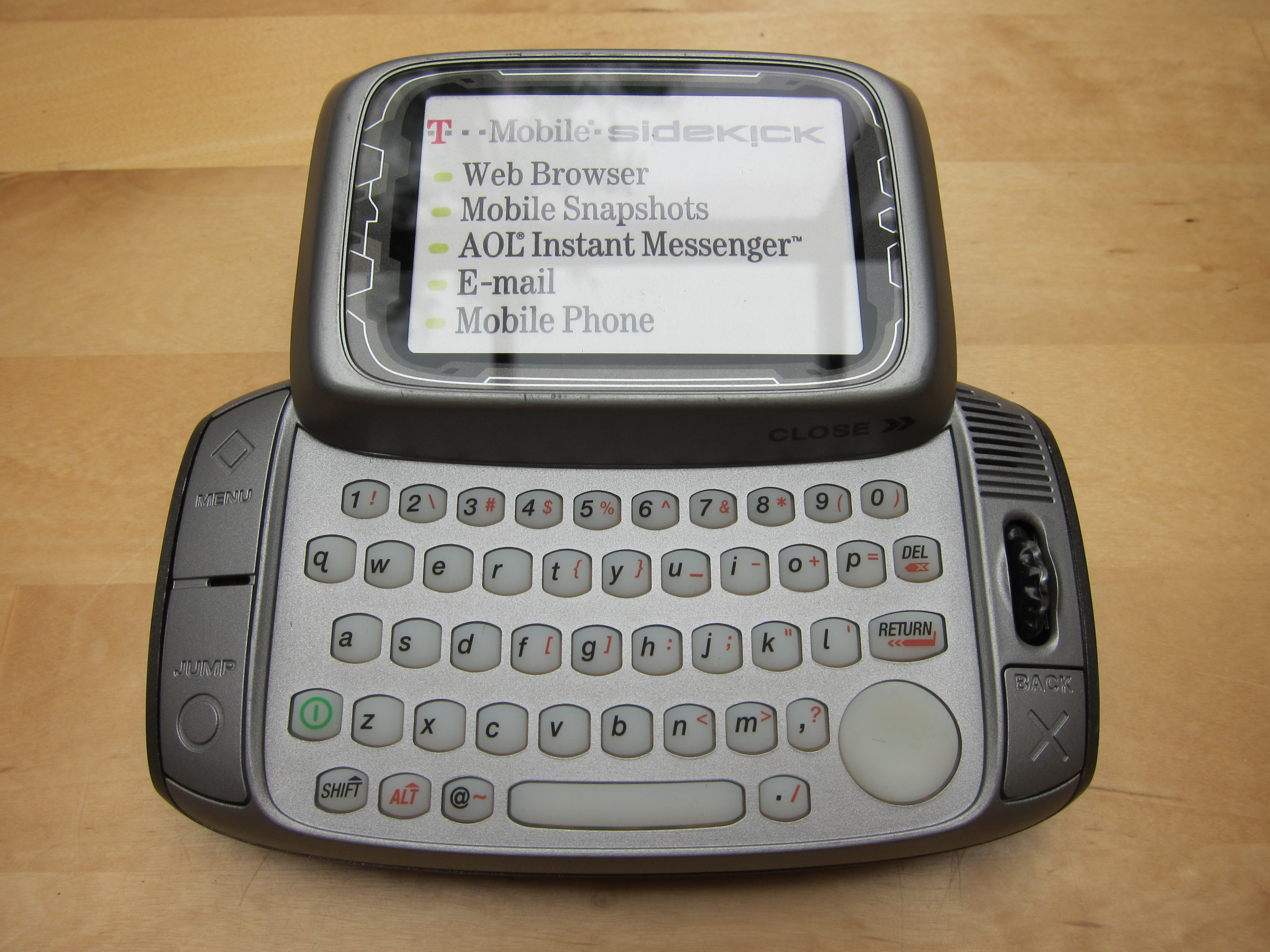
I no longer have my first-generation Danger hiptop, but I do have this T-Mobile dummy model — they call it the Sidekick down south.
Those fat and squishy rubber keys made it just about the best qwerty smartphone ever. The hiptop also had a persistent, proxied connection to the Internet; you can read more about that in the blog entry I posted when I first got one.
Hot stuff! Here are no less than three hiptop2s hanging out on my stove. If I remember correctly I had already upgraded to the second-gen model but wanted a backup device, and due to a screwup at Fido I somehow ended up with one more.
Thanks to its built-in loop I was able to adorn my hiptop with all manner of cell phone charms. This oversized Docomodake was really just for show — ordinarily I’d be sporting a much more tasteful ninja.
And here’s the hiptop that could have been. Fido was all set to start selling the hiptop3, but by then they had been fully assimilated into the evil Rogers empire and the order was cancelled. I can almost hear CEO Ted cackling from the boardroom: “Unlimited data? I don’t think so!”
Shortly thereafter I gave up my hiptop2 and moved on. You can read my requiem for it here.
]]>

